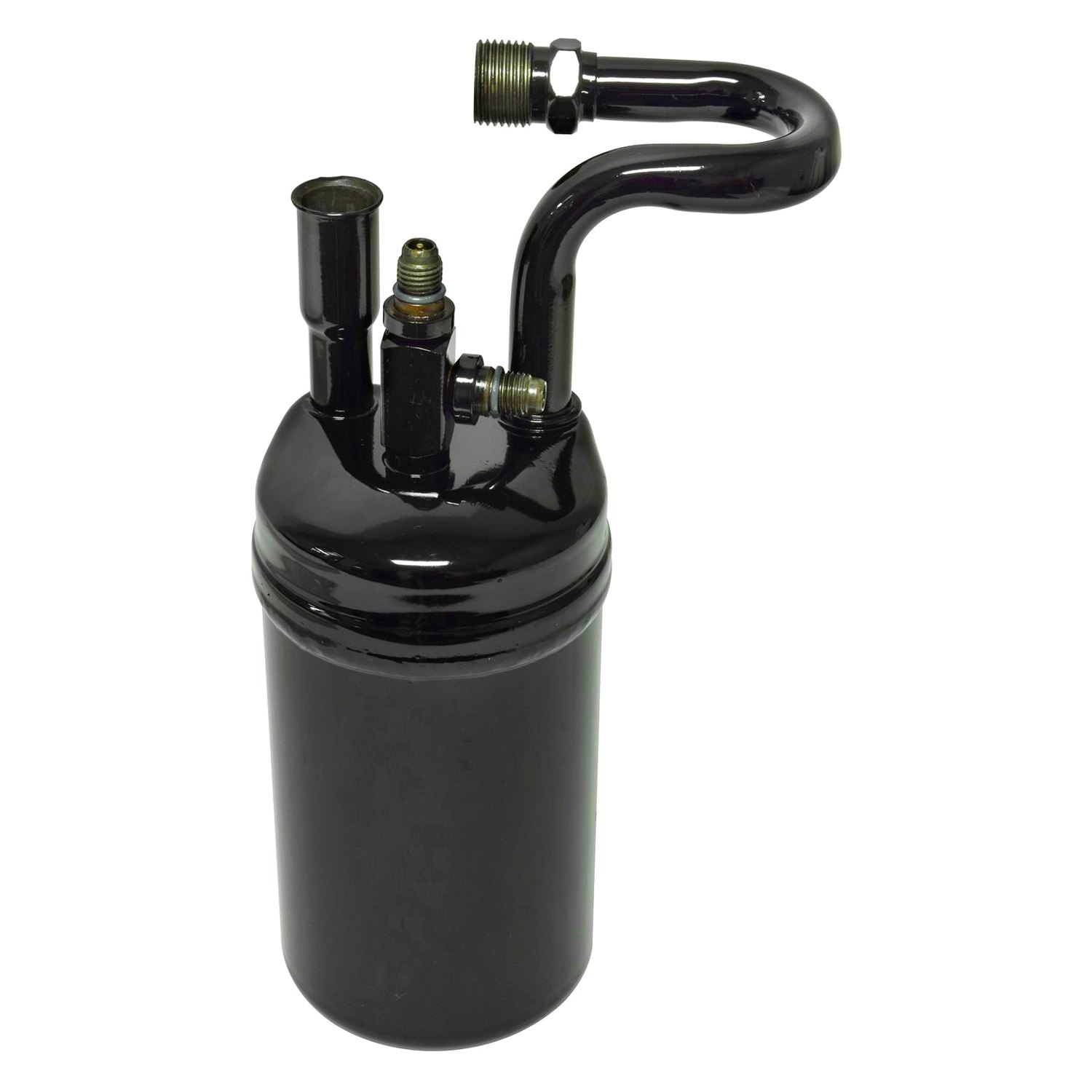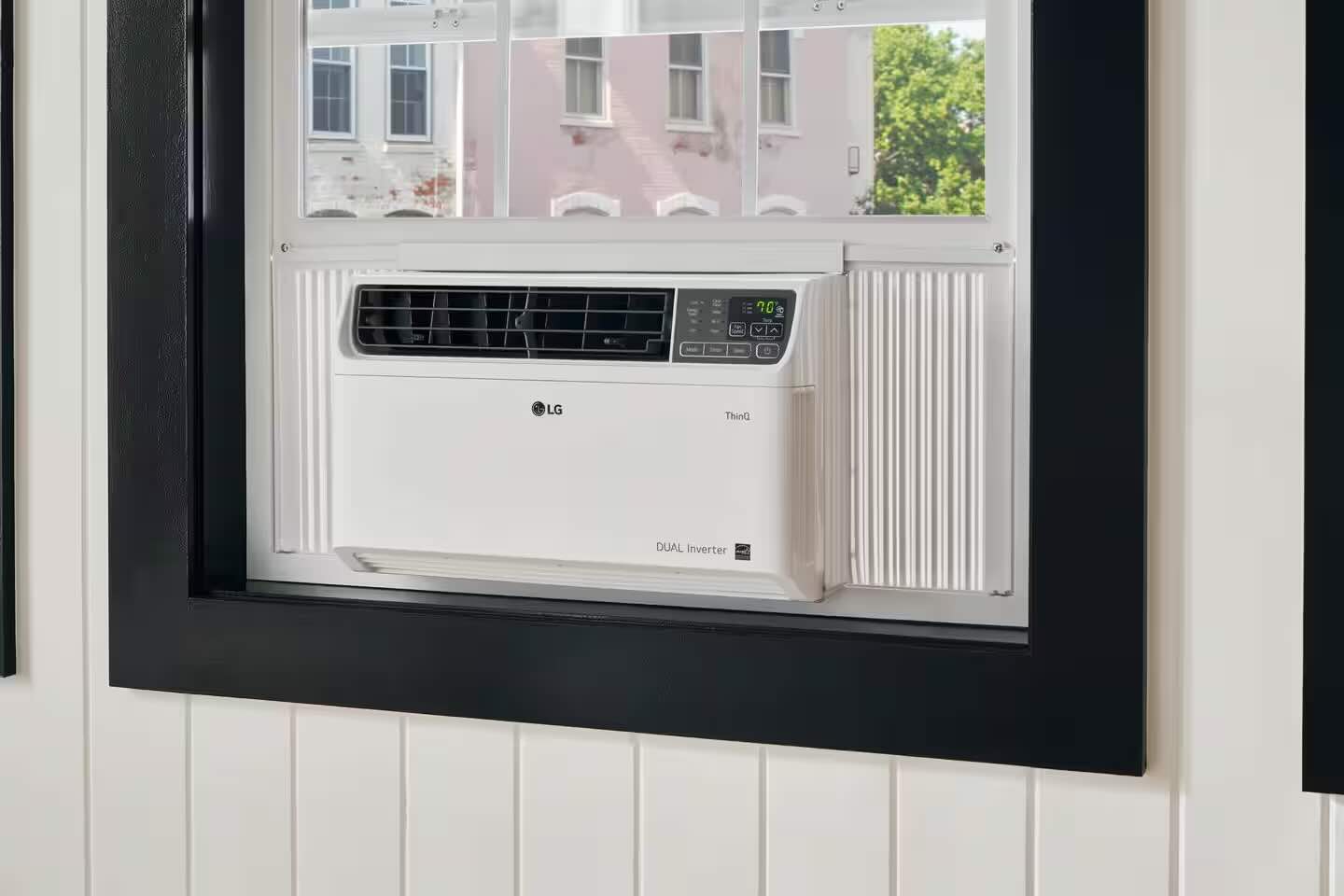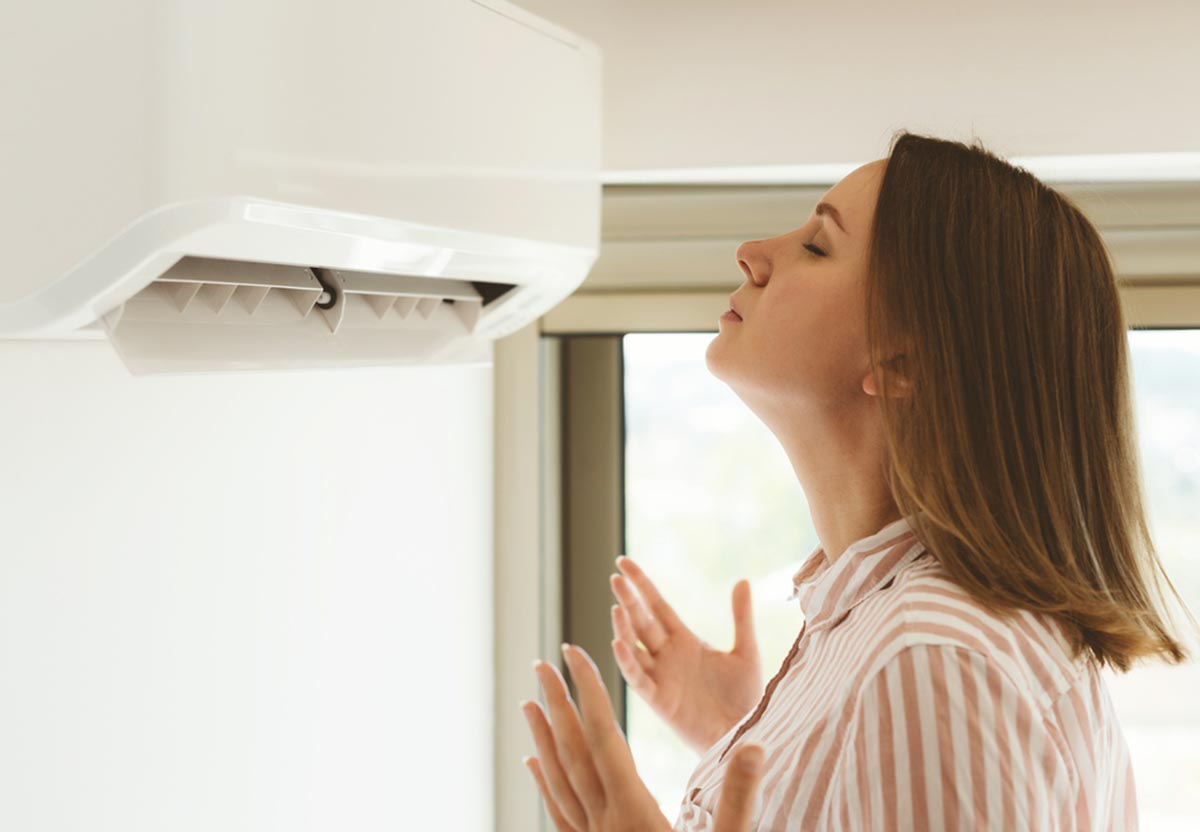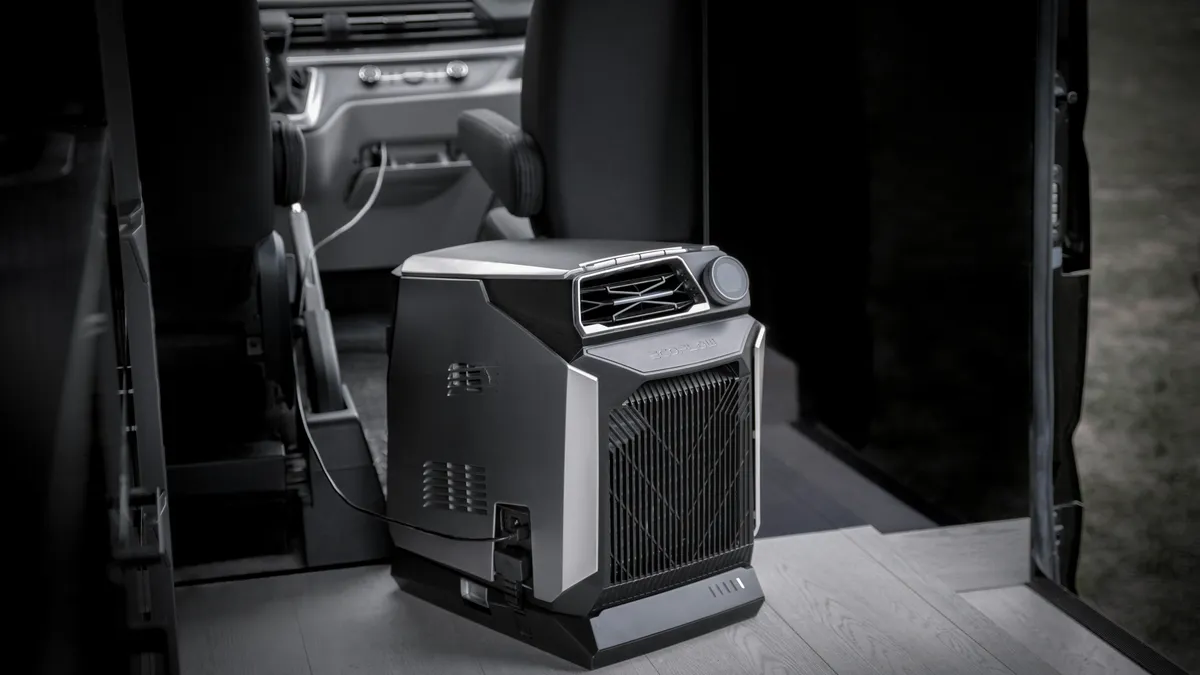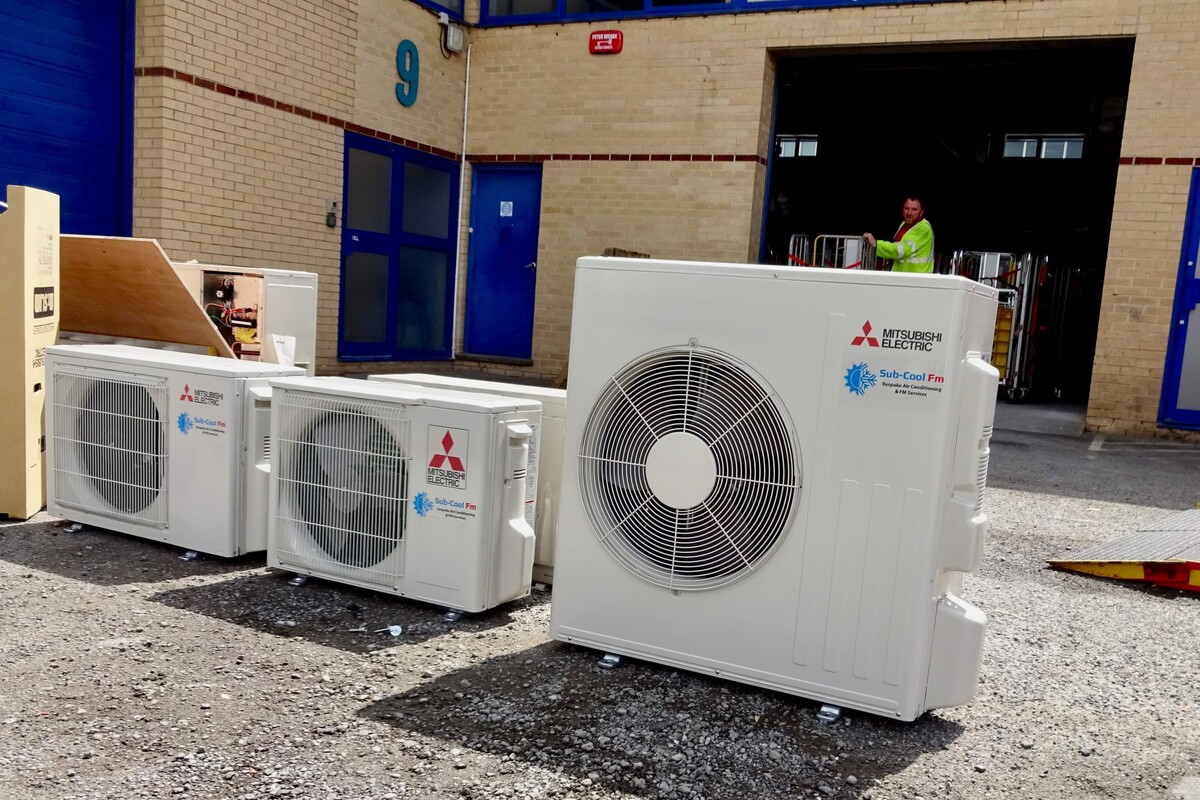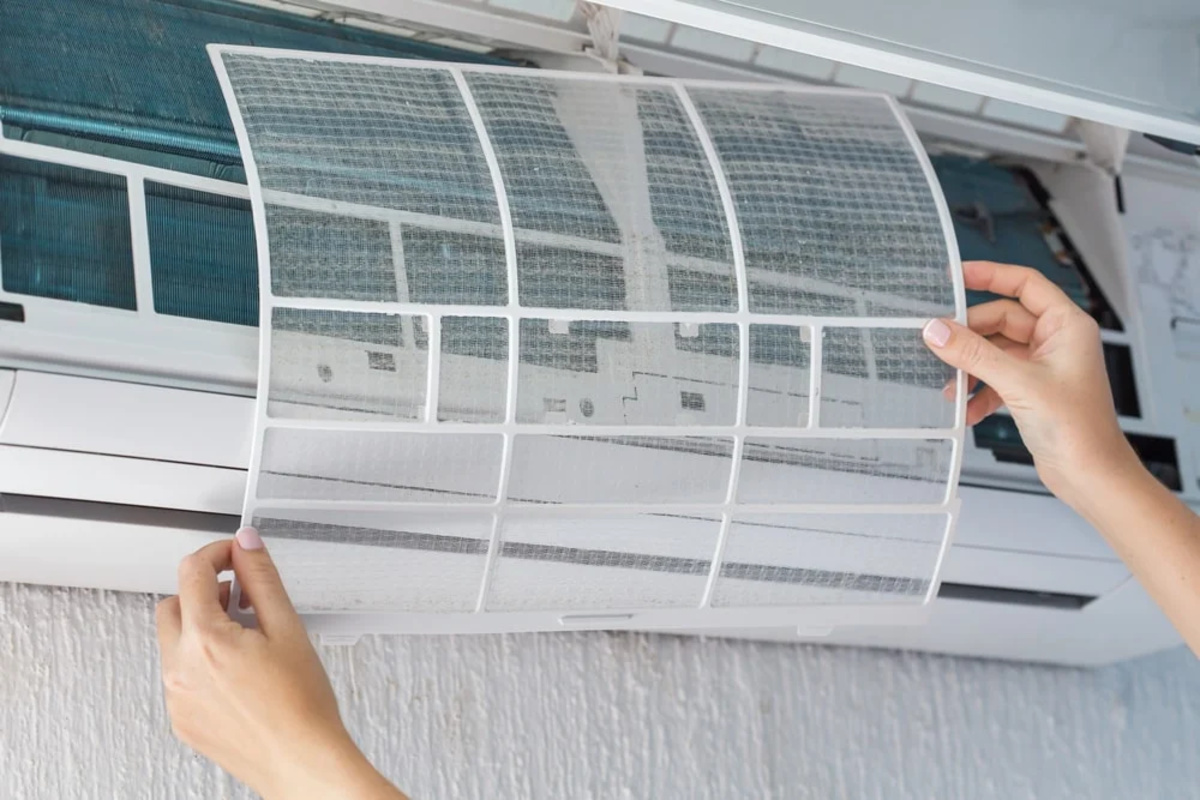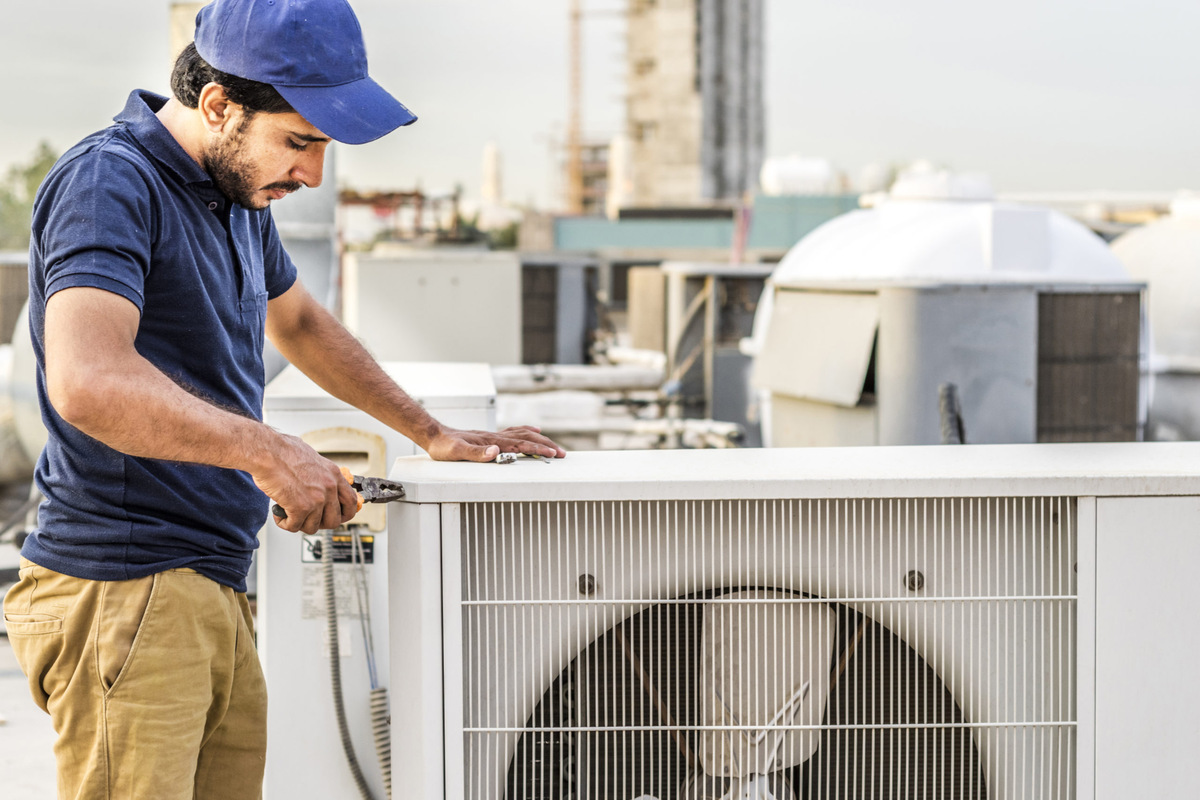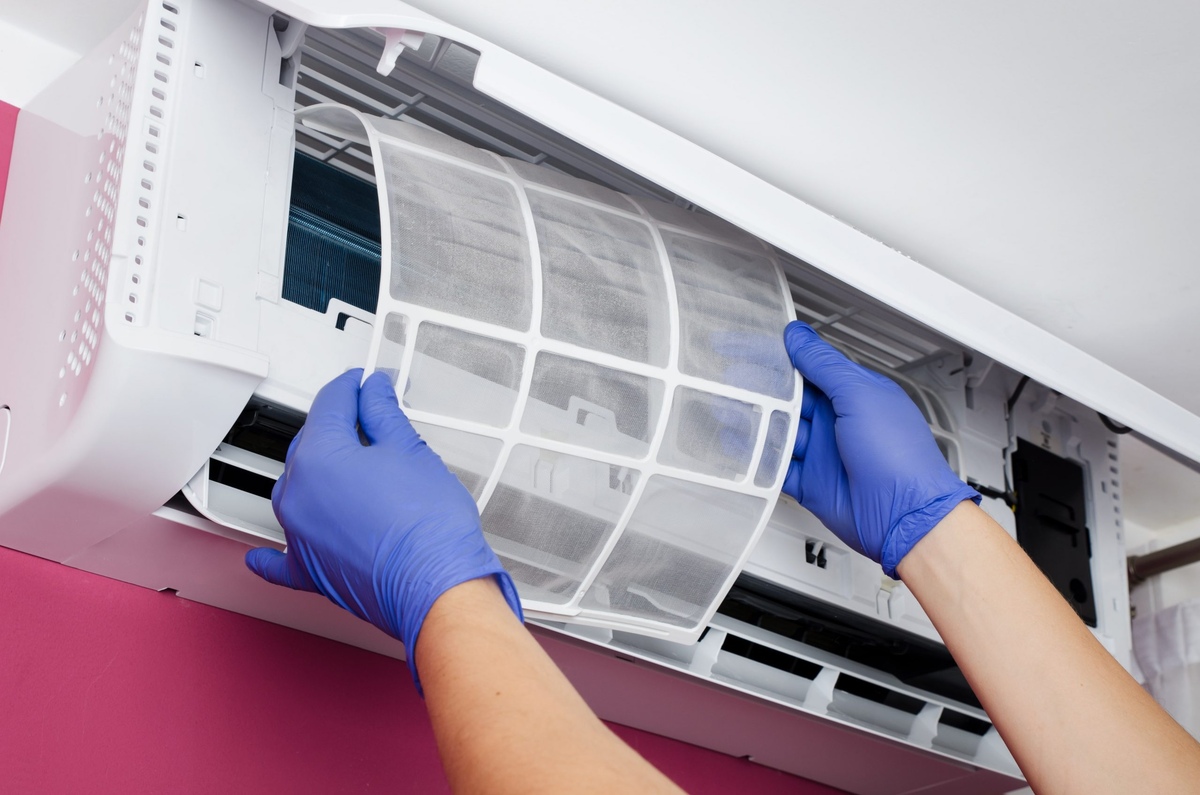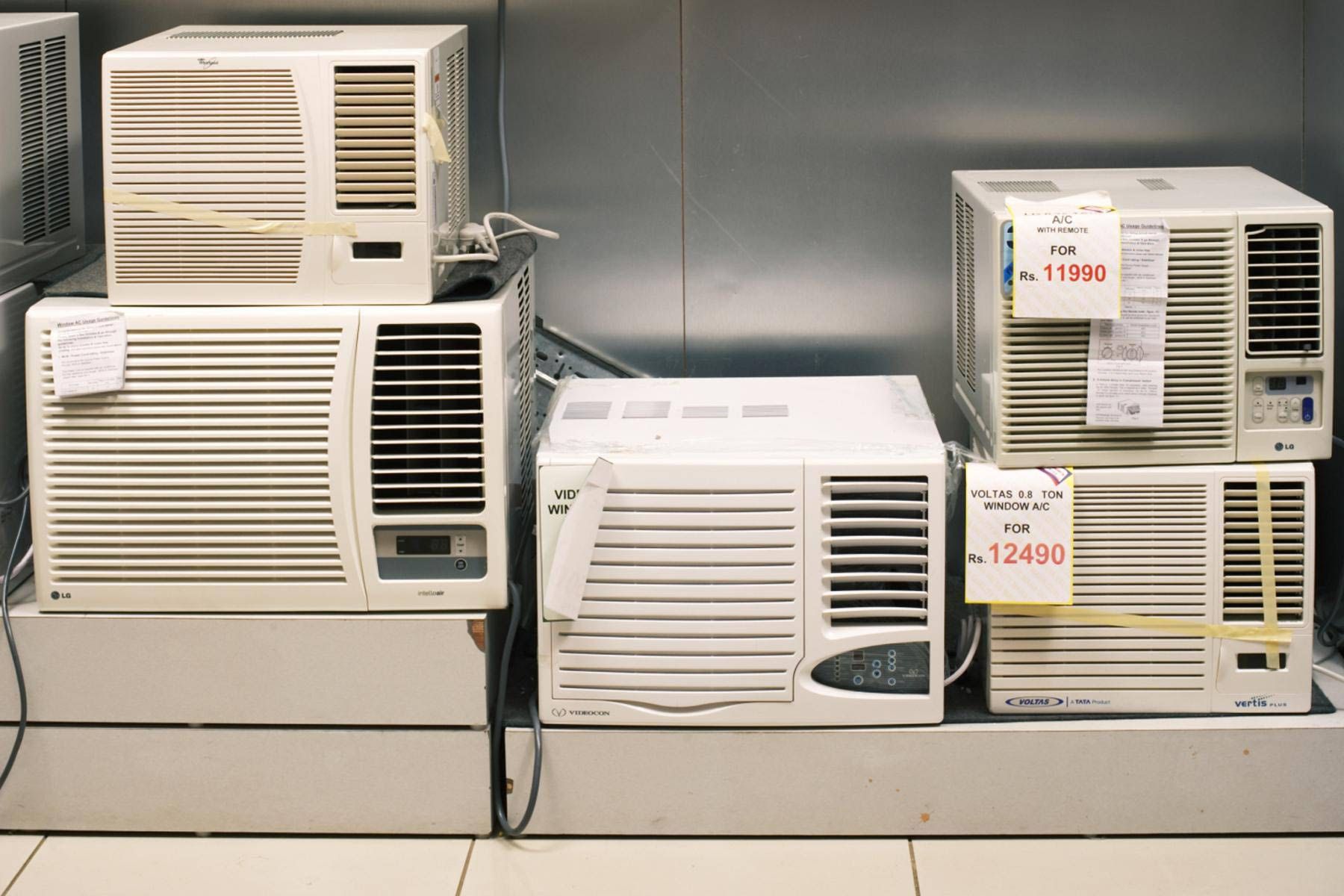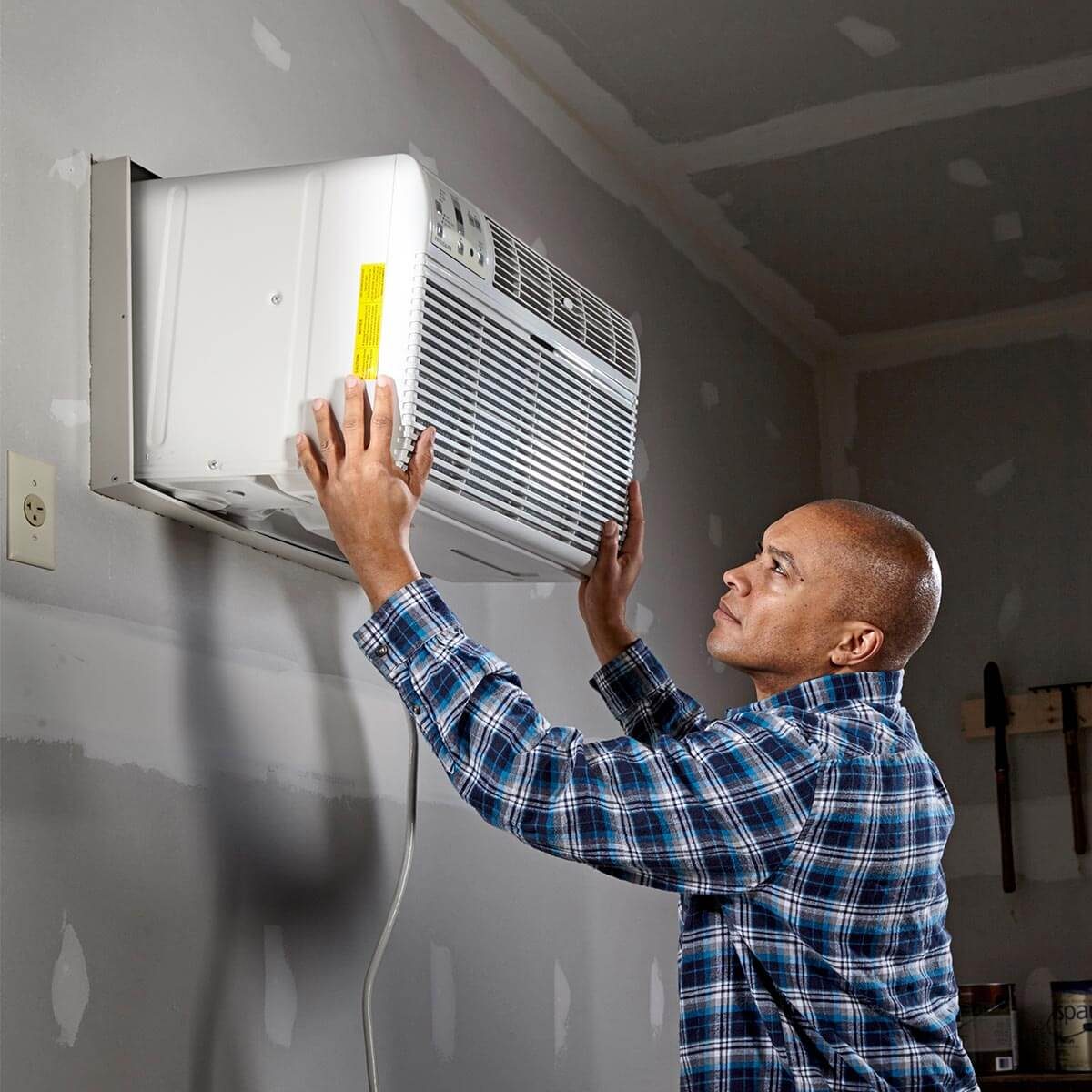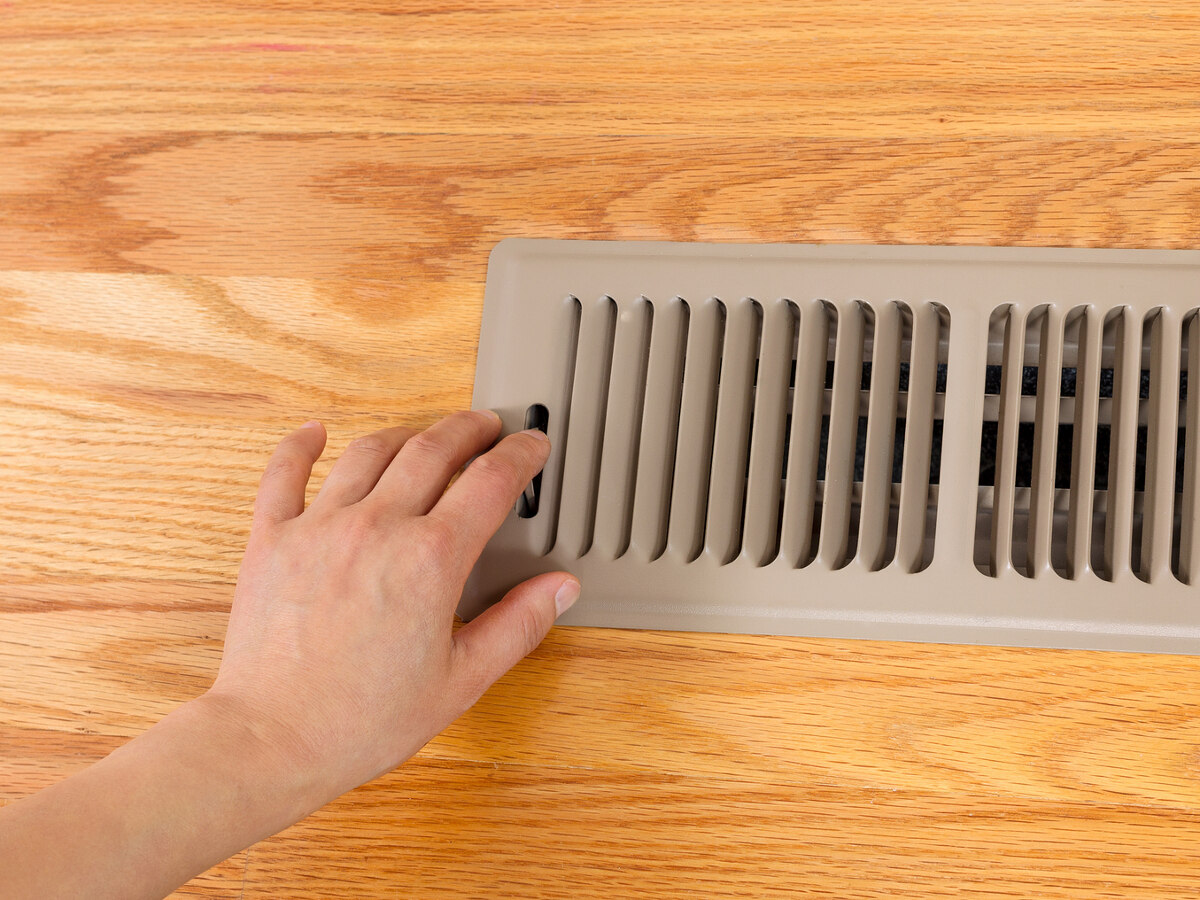Home>Home Maintenance>How To Recharge Your Air Conditioning System
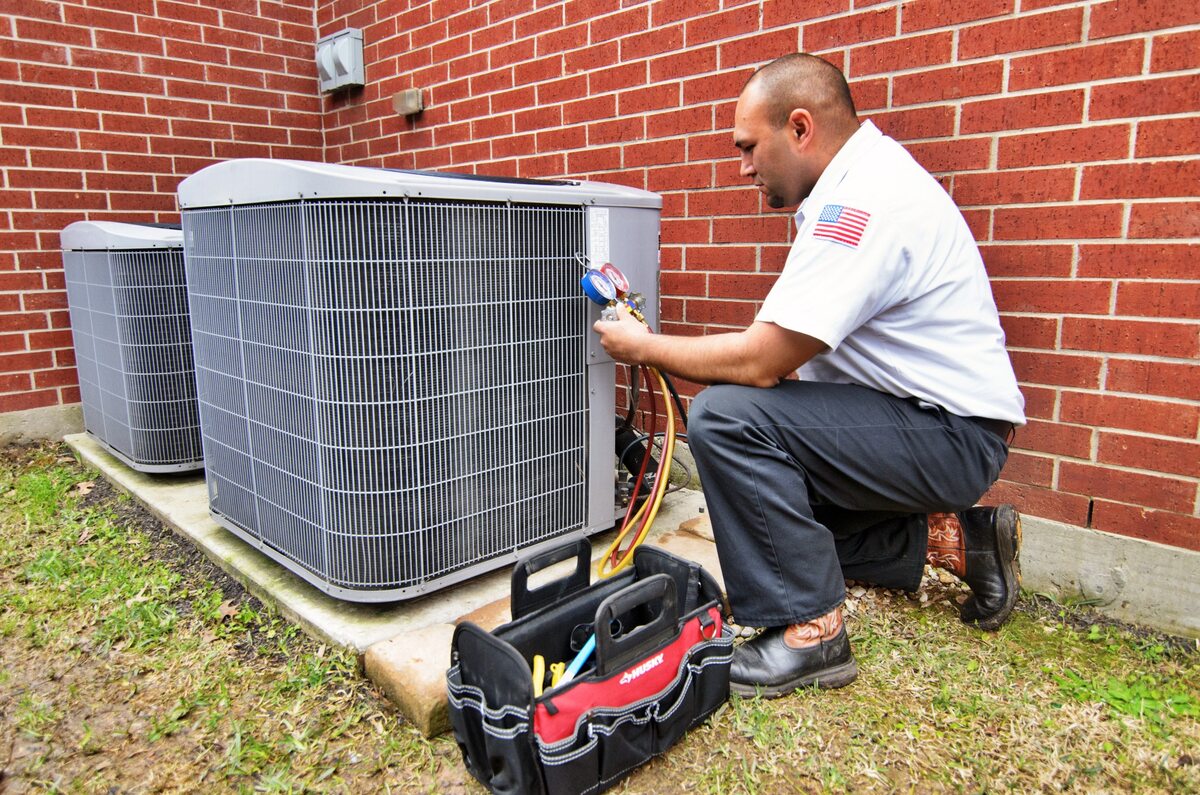

Home Maintenance
How To Recharge Your Air Conditioning System
Modified: March 6, 2024
Learn how to recharge your air conditioning system at home with this simple home maintenance guide. Keep your home cool and comfortable all summer long.
(Many of the links in this article redirect to a specific reviewed product. Your purchase of these products through affiliate links helps to generate commission for Storables.com, at no extra cost. Learn more)
Introduction
Welcome to our comprehensive guide on how to recharge your air conditioning system. As the warmer months approach, it’s important to ensure that your home’s air conditioning system is in optimal condition to keep you cool and comfortable. If you’ve noticed that your air conditioning system is not performing as efficiently as it used to, it may be a sign that it needs to be recharged.
Recharging your air conditioning system involves replenishing the refrigerant, which is responsible for cooling the air that circulates in your home. Over time, the refrigerant can become depleted, leading to reduced cooling effectiveness. Additionally, small leaks in the system can cause the refrigerant to escape, further diminishing its cooling capabilities.
This guide will walk you through the signs that indicate your air conditioning system needs to be recharged, the materials you will need for the recharging process, the steps to prepare your system for recharge, and ultimately, how to recharge the system itself. We will also discuss how to test your air conditioning system after recharging and provide tips for maintaining a properly charged system in the long run.
Before we dive into the details, it’s worth mentioning that if you are not comfortable working with HVAC systems or if your air conditioning system is still covered under warranty, it is best to seek professional assistance. However, if you have some DIY skills and want to try recharging your system yourself, this guide will provide you with the necessary information to do so safely and effectively.
Now, let’s explore the signs that indicate your air conditioning system may need to be recharged.
Key Takeaways:
- Regularly monitoring and maintaining your air conditioning system’s refrigerant levels can help ensure optimal cooling performance, energy efficiency, and overall comfort in your home, especially during the warmer months.
- If you notice signs of reduced cooling, warm air blowing from vents, longer cooling cycles, inconsistent cooling, or unusual noises, it’s important to address the issue promptly by recharging your air conditioning system to prevent further damage and discomfort.
Read more: How To Flush Air Conditioning System
Signs that your air conditioning system needs recharging
As an essential component of your home, it’s crucial to ensure that your air conditioning system is operating optimally. Over time, the refrigerant in your system can become depleted, causing it to lose its cooling capacity. Here are some signs that indicate your air conditioning system may need to be recharged:
- Reduced cooling performance: If you’ve noticed that your air conditioner is no longer providing the same level of cooling as it used to, it could be a sign that the refrigerant levels are low. As the refrigerant depletes, the cooling capacity of the system decreases, resulting in insufficient cooling in your home.
- Warm air blowing from vents: When the refrigerant levels are low, the air conditioner may blow warm or lukewarm air instead of cold air. This is a clear indication that the refrigerant needs to be replenished.
- Longer cooling cycles: If your air conditioning system is running for longer periods of time to achieve the desired temperature, it could be due to low refrigerant levels. The lack of refrigerant makes the system work harder, resulting in extended cooling cycles.
- Inconsistent cooling: Another sign of low refrigerant levels is inconsistent cooling throughout your home. You might notice that certain rooms or areas are not cooling as effectively as others. This is because the refrigerant is not able to reach all parts of the system efficiently.
- Loud hissing or bubbling noises: If you hear unusual noises coming from your air conditioning system, such as hissing or bubbling sounds, it could be a sign of a refrigerant leak. These leaks can cause the refrigerant to escape, leading to decreased cooling performance.
If you notice any of these signs, it’s important to address the issue promptly by recharging your air conditioning system. Neglecting to do so can result in further damage to the system and potential discomfort during hot weather.
Now that you are aware of the signs that indicate your air conditioning system needs recharging, let’s move on to the materials you will need for the recharging process.
Materials needed for recharging
Before you can recharge your air conditioning system, you will need to gather a few essential materials and tools. Here are the items you will need:
- Refrigerant: The most important material for recharging your air conditioning system is the refrigerant itself. The type of refrigerant you need will depend on the specific requirements of your system. It’s important to consult your system’s manufacturer guidelines or seek professional advice to ensure you choose the correct refrigerant.
- Gauges: Gauges are used to measure the pressure of the refrigerant in your system. You will need a set of gauges, including both high-side and low-side gauges, to accurately assess the refrigerant levels and pressures during the recharge process.
- Can tap valve: A can tap valve is a valve that attaches to the refrigerant can, allowing you to control the flow of refrigerant into the system. This valve is necessary for connecting the refrigerant can to the air conditioning system.
- Hose and connectors: You will need a hose and appropriate connectors to connect the can tap valve to the gauges and the air conditioning system. These components ensure a secure and leak-free connection throughout the recharge process.
- Safety goggles and gloves: It’s important to prioritize safety during the recharge process. Wearing safety goggles and gloves will protect your eyes and hands from any potential refrigerant leaks or spills.
- Ladder or step stool: Depending on the location of your air conditioning system, you may need a ladder or step stool to access and work on the unit comfortably and safely.
- Manufacturer’s instructions: Last but not least, it’s crucial to have the manufacturer’s instructions for your specific air conditioning system. These instructions will provide guidance on the correct procedure for recharging your system and ensure that you follow the recommended steps.
Having these materials on hand will ensure that you are prepared and equipped to recharge your air conditioning system properly. Once you have gathered all the necessary items, you can proceed to the next step: preparing your air conditioning system for the recharge process.
Preparing your air conditioning system for recharge
Before you begin the process of recharging your air conditioning system, it’s important to take some preparatory steps to ensure a smooth and successful recharge. Follow these guidelines to prepare your system:
- Turn off the power: Start by turning off the power to your air conditioning system. This can usually be done by switching off the circuit breaker or shutting down the power switch located near the outdoor unit. It’s essential to work on the system with the power off to avoid any electrical accidents or damage.
- Clean the condenser coils: The condenser coils, located in the outdoor unit of your air conditioning system, can accumulate dirt, debris, and dust over time. Before recharging, it’s a good idea to clean the coils using a soft brush or a gentle stream of water. Ensure the coils are dry before proceeding.
- Inspect for leaks: While preparing your system, it’s a good opportunity to inspect for any visible leaks in the refrigerant lines or connections. Look for signs of oil or refrigerant residue around fittings and joints. If you find any leaks, it’s best to address them before proceeding with the recharge.
- Remove debris: Clear away any debris from the area surrounding the outdoor unit. Trim any vegetation that may obstruct airflow and remove leaves or twigs that may have accumulated near the unit.
- Ensure proper airflow: Check that there are no obstructions blocking the vents or air registers inside your home. Additionally, make sure that all the vents are open and not blocked by furniture or other objects. Proper airflow is essential in maintaining an efficiently functioning air conditioning system.
- Check the filter: Take a moment to inspect and clean or replace the air filter in your air conditioning system. A clogged or dirty filter can restrict airflow and reduce the efficiency of your system. A clean filter will allow for better airflow and improve the overall performance of the system.
By following these preparation steps, you will ensure that your air conditioning system is in the best possible condition for the recharge process. Once you have completed these tasks, you are ready to proceed with recharging your air conditioning system, which will be covered in the next section.
Regularly check and replace your air conditioning system’s filters to ensure proper airflow and efficiency. This can help prevent the need for a full recharge.
Steps to recharge your air conditioning system
Now that you have prepared your air conditioning system for recharge, it’s time to go through the steps to actually perform the recharge. Remember to refer to the manufacturer’s instructions specific to your system for any additional guidance. Follow these steps to recharge your air conditioning system:
- Locate the service valves: Begin by locating the service valves on your air conditioning system. These valves are typically located near the outdoor unit and are marked with “H” and “L” for high-side and low-side respectively. High-side valve is smaller compared to the low-side valve.
- Connect the gauges: Attach the high-side and low-side gauges to the corresponding service valves. Ensure that the gauges are tightly connected to prevent any refrigerant leaks during the process.
- Attach the can tap valve: Connect the can tap valve to the refrigerant can according to the manufacturer’s instructions. Make sure the valve is securely attached to prevent leaks.
- Purge the hose: Before connecting the can tap valve to the air conditioning system, it’s important to purge the hose to remove any air. This can be done by briefly opening the valve on the high-side gauge. Once air bubbles are purged, close the valve.
- Open the low-side valve: Slowly turn the valve on the low-side gauge counterclockwise to open it. This will allow the refrigerant to flow into the system. Pay attention to the pressure readings on the gauges as you proceed.
- Monitor the pressures: Keep an eye on the pressure readings as you recharge the system. The target pressure will depend on the specific requirements of your system as indicated by the manufacturer. Take caution not to overcharge the system.
- Optimize the flow: Adjust the flow of refrigerant using the can tap valve to ensure a steady and controlled recharge process. This will prevent any sudden surges or excessive pressure in the system.
- Close the low-side valve: Once you have achieved the desired pressure and refrigerant level, close the low-side valve by turning it clockwise. This will prevent any further flow of refrigerant.
- Disconnect the gauges and can tap valve: Carefully disconnect the gauges and can tap valve from the system, taking care not to release any refrigerant or cause leaks. Securely cap the service valves to prevent any loss of refrigerant.
- Turn on the power: Finally, turn the power back on to your air conditioning system. Allow the system to run for a while to ensure that the newly charged refrigerant is circulating properly.
It’s important to note that each air conditioning system is unique, and the above steps are a general guideline. Always consult the manufacturer’s instructions and follow the recommended procedure specific to your system.
After recharging your air conditioning system, it’s crucial to test it to ensure that it is functioning properly, which we will discuss in the next section.
Read more: How To Recharge An AC System
Testing the air conditioning system after recharge
After successfully recharging your air conditioning system, it’s important to test it to ensure that it is functioning optimally. Testing the system will help you confirm that the refrigerant levels are adequate, and the cooling performance has improved. Here are the steps to test your air conditioning system:
- Let the system run: After recharging, allow your air conditioning system to run for at least 15 minutes to stabilize. This will give the refrigerant time to circulate through the system and cool the air effectively.
- Check the air temperature: Using a thermometer, measure the temperature of the air blowing out of the vents. The air should be significantly cooler than the room temperature. If the air is still warm or only slightly cool, it may indicate a further issue that needs attention.
- Assess cooling performance: Observe the overall cooling performance of the system. Pay attention to how quickly the air conditioner cools down the room and whether it maintains a consistent temperature. If you notice any issues, such as inadequate cooling or temperature fluctuations, it may indicate additional problems that require professional inspection and repair.
- Listen for unusual noises: While the system is running, listen for any unusual sounds, such as rattling, buzzing, or grinding noises. These noises could be a sign of underlying mechanical issues that need to be addressed.
- Check for leaks: Inspect the area around the air conditioning system and the refrigerant lines for any signs of refrigerant leaks. Look for oil stains or residue, which may indicate a leak. If you suspect a leak, it’s important to address it promptly to prevent further damage.
- Monitor energy consumption: Keep an eye on your energy consumption after recharging the air conditioning system. If you notice a significant decrease in electricity usage, it is a positive indication that the system is functioning efficiently and effectively.
By following these testing steps, you can ensure that your air conditioning system is working properly and providing the cooling comfort you desire. If you encounter any issues or have concerns about the performance of your system, it’s best to consult a professional HVAC technician who can provide expert advice and assistance.
Now that you have recharged and tested your air conditioning system, it’s important to maintain it properly to ensure long-term efficiency and performance, which we will discuss in the next section.
Tips for maintaining a properly charged air conditioning system
Now that you have successfully recharged your air conditioning system, it’s important to maintain it properly to ensure long-lasting performance and efficiency. Here are some essential tips to help you maintain a properly charged air conditioning system:
- Regularly clean or replace the air filter: A clean air filter allows for proper airflow and prevents debris from entering the system. Regularly clean or replace the filter according to the manufacturer’s guidelines to maintain optimal performance.
- Keep the outdoor unit clean: Regularly inspect and clean the outdoor unit to remove any debris, leaves, or dirt that may accumulate. Ensure that there is sufficient clearance around the unit to allow proper airflow.
- Check for refrigerant leaks: Periodically inspect the refrigerant lines and fittings for any signs of leaks, such as oil stains or hissing sounds. If you suspect a leak, it should be addressed promptly to prevent further refrigerant loss and maintain the system’s efficiency.
- Schedule annual professional maintenance: It is recommended to have your air conditioning system professionally serviced at least once a year. A trained technician can inspect the system, check refrigerant levels, clean the coils, and ensure all components are in proper working condition.
- Monitor your energy usage: Keep an eye on your energy consumption and be vigilant for any significant increases. Unusually high energy bills may indicate potential issues with your air conditioning system, such as refrigerant leaks or inefficient operation.
- Consider a programmable thermostat: Installing a programmable thermostat can help optimize the usage of your air conditioning system. Set the temperature according to your comfort needs and schedule, allowing the system to operate efficiently when you’re home and adjusting the temperature when you’re away.
- Ensure proper airflow: Keep vents and registers unobstructed to promote proper airflow throughout your home. Furniture or other objects blocking the vents can restrict the flow of cooled air and reduce the system’s efficiency.
- Monitor performance and temperature: Regularly assess the cooling performance of your air conditioning system. If you notice any changes in temperature, loss of cooling capacity, or other abnormalities, it may indicate a problem that requires attention from a professional technician.
- Follow manufacturer’s guidelines: Always refer to the manufacturer’s instructions and guidelines for your specific air conditioning system. These guidelines will provide valuable recommendations for maintenance, usage, and troubleshooting.
By following these tips, you can ensure that your air conditioning system stays properly charged and operates efficiently throughout its lifespan. Regular maintenance and proper care will help extend the life of your system and keep your home cool and comfortable.
Now that you are equipped with these maintenance tips, you can enjoy the benefits of a well-maintained, properly charged air conditioning system. Remember to schedule regular professional maintenance and address any issues promptly to ensure optimal performance.
If you feel uncertain or uncomfortable performing any maintenance tasks, it’s always advisable to seek the assistance of a professional HVAC technician who can provide expert guidance and service.
Keep cool and enjoy the comfort of a properly charged air conditioning system!
Conclusion
Congratulations! You have now completed our comprehensive guide on how to recharge your air conditioning system. By following the steps outlined in this guide, you have learned how to identify the signs that your system needs recharging, gather the necessary materials, prepare your system, recharge it, and test its performance. Additionally, you have gained valuable tips for maintaining a properly charged air conditioning system.
Recharging your air conditioning system is an essential maintenance task that ensures optimal cooling performance, energy efficiency, and overall comfort in your home. Regularly monitoring and maintaining the refrigerant levels will extend the life of your system and help prevent unnecessary breakdowns and expensive repairs.
While it’s important to have the knowledge to recharge your system, it’s crucial to prioritize safety and know your limits. If you are unsure or uncomfortable with any aspect of the process, it’s always advisable to seek professional assistance.
Remember, proper maintenance and care of your air conditioning system go hand in hand with recharging. Regularly cleaning or replacing the air filter, keeping the outdoor unit clean, checking for leaks, scheduling professional maintenance, and monitoring energy usage are all vital to maintain a well-functioning system.
By maintaining a properly charged air conditioning system, you can enjoy cool and comfortable indoor temperatures during the hot summer months, while also saving energy and reducing utility costs.
We hope that this guide has provided you with the information and confidence to take care of your air conditioning system and keep it efficiently charged. Stay cool, stay comfortable, and enjoy the benefits of a properly functioning system!
Frequently Asked Questions about How To Recharge Your Air Conditioning System
Was this page helpful?
At Storables.com, we guarantee accurate and reliable information. Our content, validated by Expert Board Contributors, is crafted following stringent Editorial Policies. We're committed to providing you with well-researched, expert-backed insights for all your informational needs.

